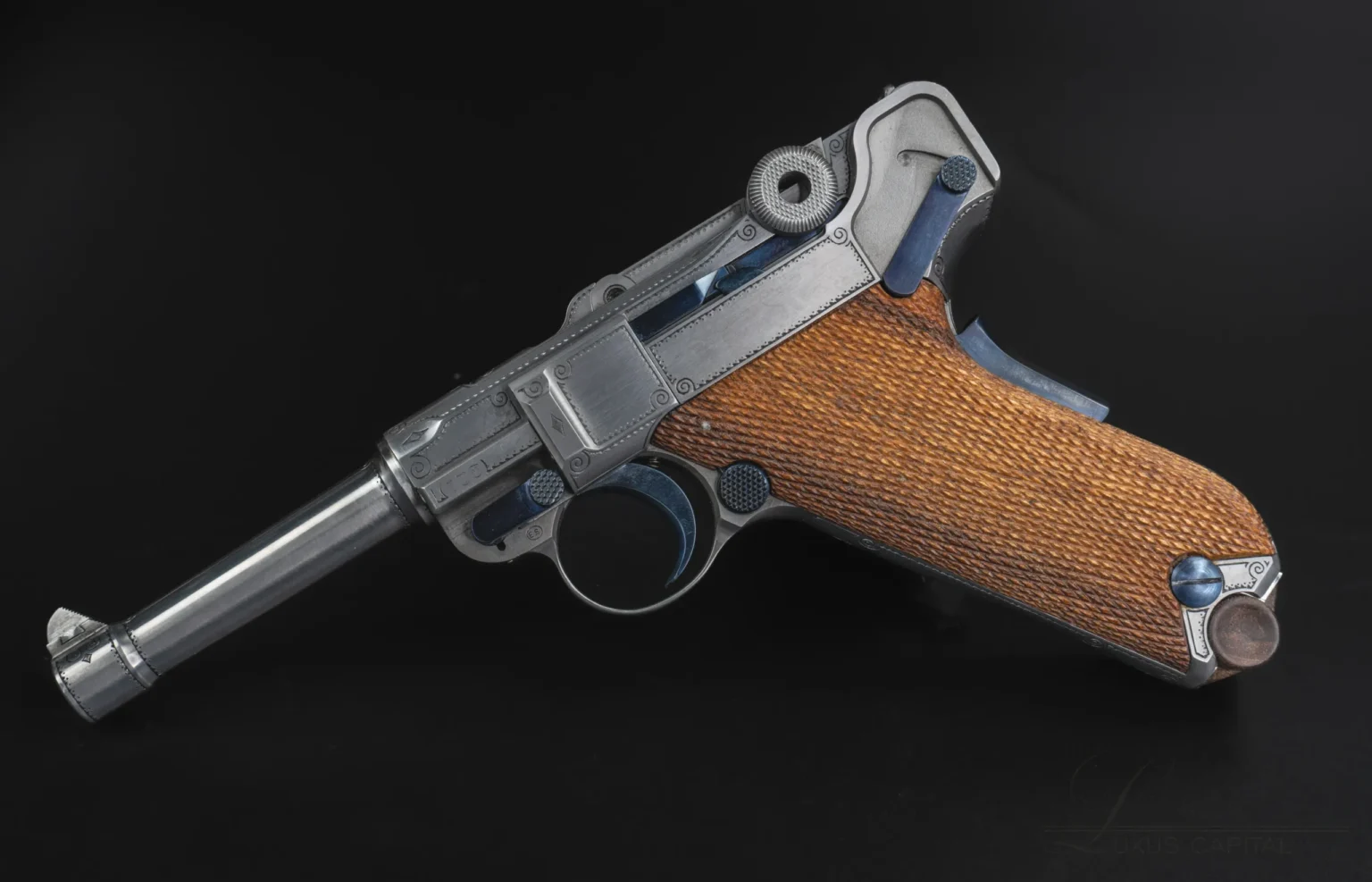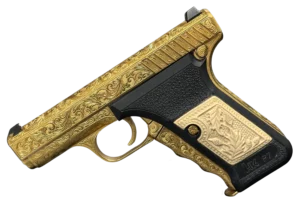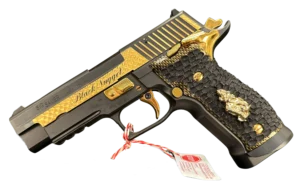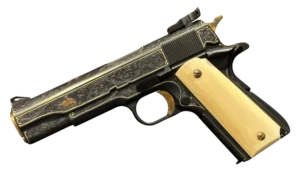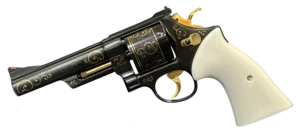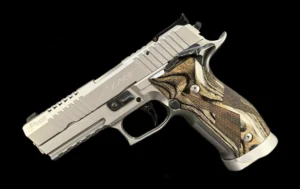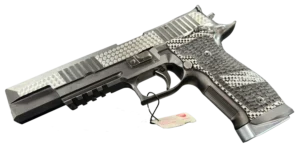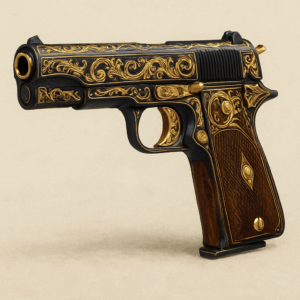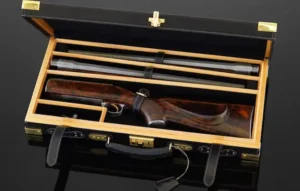Key Takeaways:
- The Luger P08 wasn’t just another pistol — it was a mechanical statement: Georg Luger took a clunky prototype and turned it into a sleek, balanced sidearm that felt as good in the hand as it looked on the table. The toggle-lock action, the grip angle, the introduction of the 9mm Parabellum — all of it pointed to a design that wasn’t just ahead of its time, it kind of redefined what “time” even meant in firearms design.
- From the trenches of World War I to the ruins of World War II, the Luger earned its scars the hard way: It wasn’t perfect — a little too complicated, a little too expensive to mass-produce — but soldiers trusted it. Officers loved it. And Allied troops wanted to take it home. That kind of reputation isn’t built in factories. It’s forged in mud, smoke, and survival.
- Even now, more than a century later, the Luger’s influence is still hiding in plain sight: The 9mm round it helped popularize? Everywhere. The grip ergonomics? Echoed in modern handguns. And the Luger itself? Still coveted, still studied, still sitting in display cases and safe drawers like a time machine disguised as a firearm. Not many tools — or weapons — get to become legends. This one did.
Some firearms fade into obscurity after their time on the battlefield ends. Not the Luger P08.
If anything, the Luger’s reputation has only grown. It’s a pistol that has become as much a symbol of 20th-century history as it is a finely tuned machine. It’s hard to look at one without feeling like you’re holding a piece of something bigger — a war, a moment, a legacy.
A Design That Changed Everything
So, where did it all begin? With Georg Luger, naturally — a sharp-minded Austrian engineer born in 1849 who didn’t just tinker with firearms; he reimagined them.
Back then, the Borchardt C-93 was the big innovation. But honestly? It was bulky, awkward, and felt more like a proof of concept than something you’d want to take into a firefight. Georg Luger took that clunky prototype and sculpted it into something sleeker, smoother, more intuitive.
By 1898, his refined toggle-lock design was ready. And by 1900, the world got its first taste of what would eventually become the Pistole Parabellum — or more famously, the Luger P08.
Official German Sidearm (and Instant Icon)
In 1908, the German military officially adopted it. That’s where the “P08” part comes from. It was elegant and deadly, precise and durable — everything a soldier (and let’s be real, a weapons-obsessed empire) could want.
Manufactured first by DWM (Deutsche Waffen und Munitionsfabriken), and later by Mauser, the Luger was distinct — even artistic. The toggle-lock mechanism gave it a signature silhouette. And the 9mm Parabellum cartridge, also designed by Luger, was just the right balance of punch and control.
You’ve probably seen that toggle action before, even if you didn’t know what you were looking at. It moves like a mechanical handshake — strange, almost delicate, but somehow it works. And it’s mesmerizing.
Who Was Georg Luger, Really?
Here’s the thing about Luger: he wasn’t just an engineer with a steady hand and a sharp pencil. He was a bit of a perfectionist. The kind of person who’d care just as much about how something felt in the hand as how it worked under pressure.
Born in Tyrol, trained in engineering, and pulled into the firearms world almost by fate, Luger didn’t chase glory. He chased functionality. The beauty of the P08 wasn’t some happy accident — it was intentional. The balance, the grip angle, the trigger break — all of it felt… right.
And that’s the genius of it: it was as beautiful as it was brutal.
Trench Proven: The Luger in World War I
Then came the war to end all wars.
The Luger P08 wasn’t just issued to German soldiers in World War I — it became their signature sidearm. You’d see it holstered on officers, in dugouts, on patrols, covered in mud, scratched by shrapnel. And yet, it worked.
Despite brutal trench conditions — damp, dirt, and everything else that makes machinery seize up — the Luger kept firing. It wasn’t immune to failure (no pistol is), but soldiers trusted it. Some even preferred it over more rugged options, just because of the feel.
Allied troops, for their part, were fascinated by it. So much so that captured Lugers became coveted war trophies — sometimes even more desirable than medals.
Variants and Tweaks Along the Way
As with most iconic designs, the Luger wasn’t frozen in time.
One of the most interesting offshoots was the “Artillery Luger” — a version with a longer barrel and the option to mount a shoulder stock. Basically, turning it into a compact carbine. Sounds clunky? It kind of was. But in certain roles — especially for artillery units who needed something halfway between a rifle and a pistol — it worked.
And then there was the shift from 7.65mm to 9mm Parabellum. The German military asked for more stopping power, and Luger delivered. That change alone arguably helped make 9mm the global standard for handguns that it is today.
Even when modified, however, the core design remained largely unchanged. That toggle-lock? Still there. The swooping grip? Untouched. Some things you just don’t mess with.
Still Fighting: The Luger in World War II
By the time World War II rolled around, the Luger P08 was already a legend — but it was also kind of… expensive. That gorgeous engineering came at a cost. Each pistol was practically hand-fitted. Not exactly ideal when you’re gearing up for a massive industrial war.
Enter the Walther P38 — simpler, cheaper, easier to crank out on an assembly line. And yet, the Luger stuck around. Officers still carried them. Elite units still requested them. And the mystique? It only deepened.
By the 1940s, the Luger wasn’t just a pistol — it was a symbol. A piece of the German military’s identity. And like all symbols, it outlived the very system that made it famous.
After the War: From Battlefields to Glass Cases
Once the dust settled and Germany fell, the Luger P08’s days as a standard-issue sidearm were over.
But collectors? Oh, they weren’t letting it go that easily.
Surplus Lugers flooded the market post-war, and prices varied wildly. Some were pristine. Others were beat-up war relics with stories hidden in every scratch. A Luger captured at Normandy? That’s not just a gun. That’s a narrative in steel.
Even today, Luger values fluctuate based on markings, year, factory, and of course, condition. A rare Navy model in excellent shape? Easily thousands of dollars. A mismatched parts gun with heavy wear? Still desirable, just a bit less mythical.
There are even reproductions floating around now — some good, some… not so much. But for many, even holding a modern clone feels like touching history.
The Luger’s Shadow in Modern Gun Design
Here’s what most people forget: the Luger didn’t just influence collectors — it changed the trajectory of handgun design.
The 9mm Parabellum cartridge? That’s the round of choice for militaries and police forces around the globe. And it all started here.
Even though very few modern guns use the toggle-lock action (it’s kind of a mechanical nightmare by today’s standards), the Luger’s grip angle, balance, and general vibe have echoed into the designs of countless pistols since.
When people talk about the “feel” of a good pistol — when it sits just right in the hand — they’re often describing something the Luger figured out more than a century ago.
Final Thoughts: The Luger’s Legacy Isn’t Going Anywhere
The Luger P08 is one of those rare creations that live in two worlds: it’s both a brutally efficient tool of war and an object of almost delicate craftsmanship.
It has outlived the men who designed it, the regimes that issued it, and the wars it fought in. And yet, it’s still here—tucked into safes, displayed in museums, passed down in families, studied by engineers, coveted by collectors.
It’s not perfect. It never was. But it didn’t need to be.
The Luger P08 was — and is — unforgettable. And honestly, that’s more than most pistols ever get to be.
Frequently Asked Questions
Because it wasn’t just a gun — it was the gun. The Luger had this unmistakable look and feel that made it stand out. That toggle-lock action, the swooping grip, the clean mechanical movement — it was weirdly elegant for something built for war. Plus, it served in both World Wars and made such a strong impression that even the people fighting against it wanted to bring one home.
Honestly? It’s part engineering flex, part mechanical magic. Instead of a typical slide like most pistols, the Luger uses a knee-joint-style toggle-lock system. It looks bizarre, especially in slow motion, but it worked — at least under the right conditions. It gave the gun a unique feel and recoil impulse. Downside? It was a bit high-maintenance. Mud and sand weren’t exactly its best friends.
A bit of both. It was accurate, balanced, and had great ergonomics for its time. But it wasn’t perfect — the complexity of its design made it slower and more expensive to produce, especially during wartime. That’s why Germany eventually switched to the Walther P38. Still, the Luger earned its rep in the trenches and on the battlefield. People trusted it, and that says a lot.
Good question. The Artillery Luger (officially the LP08) was a longer-barreled version with an attachable shoulder stock. Think of it like a pistol trying to be a mini-rifle. It was mostly used by artillery crews or rear units who didn’t need a full-sized rifle but still wanted some reach. It’s a cool variant — collectors love it — but it’s not something you’d want to carry into close-quarters combat.
Yep, that’s true. Georg Luger developed the 9×19mm round specifically for this pistol, and it ended up becoming one of the most widely used handgun calibers in the world. So, if you’re shooting 9mm today — which, let’s be honest, most people are — you’ve got the Luger to thank.


